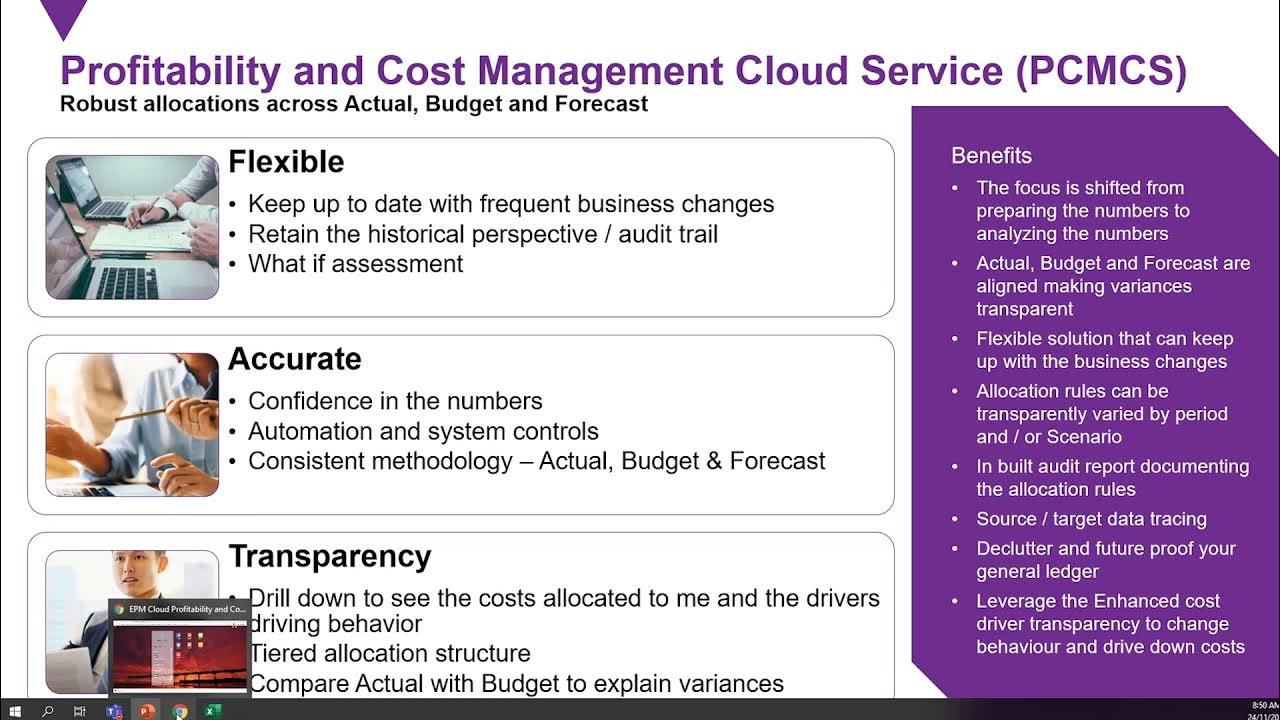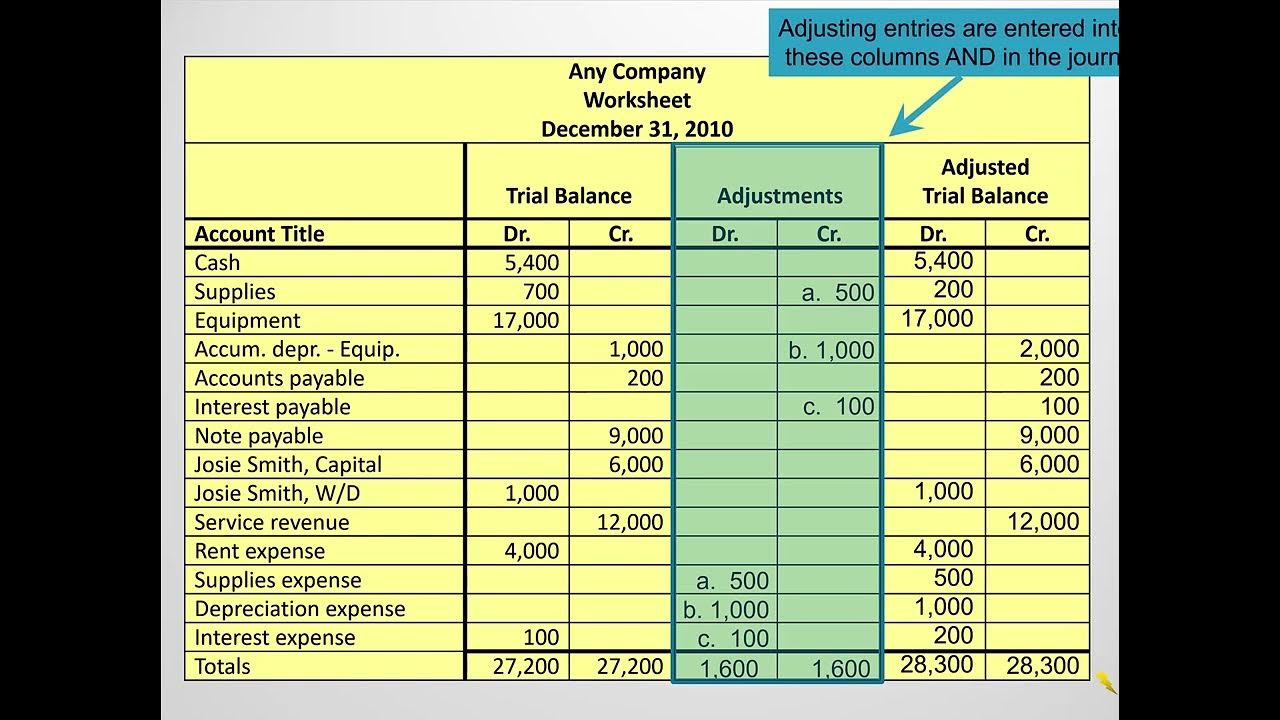Oracle EPM - Introducing Oracle Financial Consolidation and Close (FCSS)
Summary
TLDRIn this overview of Oracle Financial Consolidation and Close, Steve Hichman highlights the tool's capability to streamline statutory reporting from trial balance to output. With over 30 years of heritage from Hyperion, this solution integrates within the Oracle EPM Cloud suite, encompassing essential components like account reconciliation and narrative reporting. Key functionalities include data loading, financial reporting, intercompany elimination, and customizable consolidation methods. The system enhances the financial close process by tracking tasks, providing visibility, and ensuring accurate reporting, making it an essential asset for organizations looking to improve their financial management.
Takeaways
- 😀 The Oracle Financial Consolidation and Close tool is designed to meet statutory and external reporting requirements.
- 📊 It is part of the broader Oracle Enterprise Performance Management (EPM) Cloud toolset, which includes various integrated components.
- 🔍 The tool has a rich history, evolving from Hyperion Financial Management and Hyperion Enterprise, benefiting from over 30 years of experience.
- ☁️ Customers currently using Hyperion Financial Management face a decision to upgrade or transition to the cloud.
- 🎓 A webinar was scheduled on September 24th to demonstrate the tool's functionalities.
- 💻 The interface allows data loading, financial reviews, intercompany eliminations, and validations through both a browser and Smart View in Excel.
- 📈 Users can drill down into transactional balances for deeper insights into financial figures, enhancing transparency.
- 📅 The tool tracks close process tasks through a Gantt chart, allowing users to monitor overdue tasks by person and department.
- 🤝 Intercompany eliminations can be managed efficiently, with reports available to identify mismatches and facilitate corrections.
- 🔄 Pre-built consolidation methods offer flexibility for different ownership structures, with options to configure additional methods as needed.
Q & A
What is the primary purpose of Oracle Financial Consolidation and Close?
-The primary purpose of Oracle Financial Consolidation and Close is to meet statutory or external reporting requirements, as demonstrated by DXC's annual report, which includes financial statements and notes to the accounts.
How does Oracle Financial Consolidation and Close fit into the broader Oracle EPM Cloud toolset?
-Oracle Financial Consolidation and Close is a subset of the Oracle Enterprise Performance Management (EPM) Cloud toolset, which includes various tools that work together for functions such as account reconciliation and narrative reporting.
What historical background is mentioned regarding Oracle's financial management tools?
-Oracle has a history of over 30 years in financial management tools, starting with Hyperion Financial Management and previously Hyperion Enterprise, which have contributed to the current capabilities of Oracle Financial Consolidation and Close.
What options do customers currently using HFM have regarding their systems?
-Customers currently using Hyperion Financial Management (HFM) face a fork in the road: they can either upgrade their HFM system or take the opportunity to transition to the cloud.
What features will be demonstrated during the webinar on September 24th?
-The webinar will demonstrate the browser interface, focusing on pre-built functionalities such as journaling, dashboarding, reporting flexibility, data loading, translation, elimination, and consolidation processes.
How does the tool manage multiple general ledger systems?
-The tool allows for the management of multiple general ledger systems by providing mapping functionality to consolidate data from various charts into a common structure.
What is the significance of the Gantt chart mentioned in the process?
-The Gantt chart helps track all tasks that make up the financial close process, allowing users to see tasks, dependencies, and their statuses, thereby facilitating better management of the close process.
What capabilities are provided for analyzing loaded financial data?
-The tool allows users to drill down into the loaded financial data to explore transactional balances, which helps answer questions about significant figures in financial reports.
How are intercompany eliminations handled in the tool?
-The tool provides reports to identify mismatches in intercompany activity, enabling users to fix discrepancies at the source or post journals as needed, ensuring accurate elimination of intercompany transactions.
What flexibility does the tool offer in terms of consolidation methods?
-The tool offers pre-built consolidation methods that can be applied on an entity-by-entity basis, allowing for adjustments and the addition of new methods as required by the user.
Outlines

Этот раздел доступен только подписчикам платных тарифов. Пожалуйста, перейдите на платный тариф для доступа.
Перейти на платный тарифMindmap

Этот раздел доступен только подписчикам платных тарифов. Пожалуйста, перейдите на платный тариф для доступа.
Перейти на платный тарифKeywords

Этот раздел доступен только подписчикам платных тарифов. Пожалуйста, перейдите на платный тариф для доступа.
Перейти на платный тарифHighlights

Этот раздел доступен только подписчикам платных тарифов. Пожалуйста, перейдите на платный тариф для доступа.
Перейти на платный тарифTranscripts

Этот раздел доступен только подписчикам платных тарифов. Пожалуйста, перейдите на платный тариф для доступа.
Перейти на платный тарифПосмотреть больше похожих видео

Oracle EPM - Introducing Profitability and Cost Management Cloud Service (PCMCS)

17. Laporan Keuangan Pemerintah Pusat

Corporate Governance in European Union

What is Accounting cycle? | Key phase, Significance of Accounting cycle

What is the Adjusted Trial Balance and How is it Created?

Discuss How "Consolidation" works
5.0 / 5 (0 votes)
